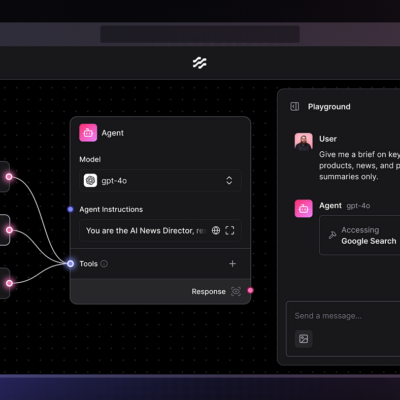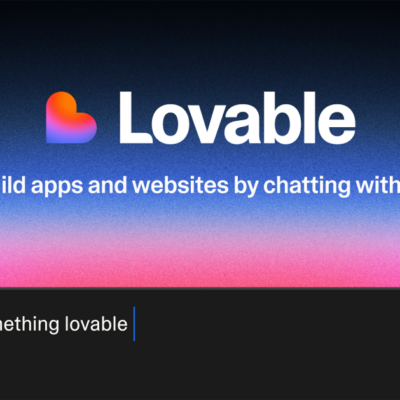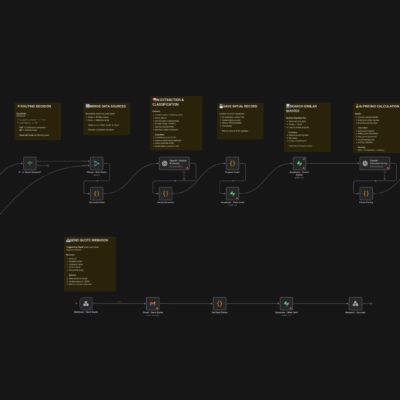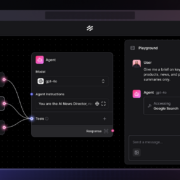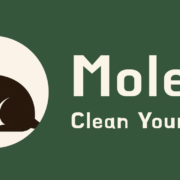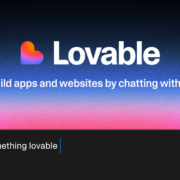In today’s rapidly evolving business landscape, the allure of artificial intelligence is undeniable. Many business owners are eager to leverage AI to streamline operations, cut costs, or boost revenue. For those looking to capitalize on this demand, the immediate thought often jumps to starting an “AI agency.” But based on my own journey and observations, diving headfirst into an agency model is often the riskiest, most stressful, and least profitable first step you can take.
The truth is, if you’ve never successfully sold and delivered AI workflows, building an agency can quickly become a quagmire of client headaches, logistical nightmares, and financial losses. I’ve seen countless hopeful entrepreneurs get bogged down by the complexities of managing teams, juggling multiple client demands, and dealing with projects that spiraled out of control. It’s a fast track to burnout before you ever make meaningful money.
There’s a far smarter, simpler, and faster way to profit from AI workflows – one that doesn’t require quitting your job, hiring anyone, or taking on immense risk. It’s the path I personally followed to go from zero AI experience to earning thousands per workflow, all while maintaining my career. This approach focuses on building expertise and delivering value incrementally, setting you up for sustainable growth and true mastery.
In this guide, I’ll break down why the agency model can be a trap, what to do instead, and provide a step-by-step roadmap for selling your first AI workflows and scaling your impact.
Why Starting an AI Agency is Often a Trap
The internet is rife with advice pushing the “start an agency” narrative for anyone looking to make money with AI. While agencies certainly have their place, launching one prematurely is a common pitfall I strongly advise against. Here’s why it’s often a terrible first move:
The Hidden Complexities of Project Delivery
When I first ventured into this space, my mindset was simple: “get in, get money, get out.” I’d quote a project, say $1,500 for an AI build, thinking it would be quick cash. What I quickly learned was that I didn’t truly understand the nitty-gritty of project scope, proper pricing, or the myriad small complexities that inevitably arise during delivery. Projects took significantly longer than anticipated, and with the price already agreed upon, I was stuck. I was essentially taking a huge loss.
This problem is magnified tenfold in an agency setting. As a solo practitioner, I was wearing all the hats: scoping, sales, building, and delivery. But if I had an agency, I’d have to hand that project off to a developer. They might declare the agreed-upon budget insufficient for the build, slashing my margins. Or they’d demand a full project requirement document, which I, as an inexperienced agency owner, wouldn’t even know how to write effectively.
The same applies to sales. If you don’t know how to scope accurately, how can you expect a salesperson or appointment setter to do so? This often leads to bad prices, flawed proposals, and a messy delivery process. In an agency, such missteps don’t just hurt your bottom line; they damage your brand and reputation. I’ve witnessed agencies go all-in, close numerous sales, only to realize their developers aren’t up to par, or they can’t afford enough skilled staff. They become stretched too thin, drowning in projects, and ultimately fail to deliver on time, or at all. That’s not a sustainable business; it’s a stress machine.
The Challenge of Client Management
Beyond the technical and delivery challenges, one of the most draining aspects of running an agency is juggling multiple clients simultaneously, each with distinct personalities, expectations, and timelines. If client expectations aren’t meticulously aligned from the outset, it becomes a nightmare.
It’s crucial to understand that even if a client is willing to pay a substantial sum, that doesn’t automatically mean they’re the right client for you. AI isn’t magic, though some clients might perceive it as such. If a client is in deep financial trouble, hoping your AI workflows can save their sinking business, you’re setting yourself up for an incredibly high-pressure, miserable situation. You don’t want clients who are extremely risk-averse and see AI as a last-ditch lifeline.
Instead, I sought out forward-thinking clients who viewed AI as a strategic investment to gain a competitive edge. My go-to discovery question was always, “What do you think about AI and where do you see it going?” Their answer was incredibly telling. Hesitation or skepticism often indicated resistance to the process, while excitement and a bullish outlook signaled a potentially great, collaborative partner.
Learning to Walk Before You Run
The fundamental issue with jumping into an agency first is that you’re trying to sprint before you’ve learned to walk. You haven’t yet mastered the entire journey: from initial outreach, to detailed project scoping, building, deployment, and long-term support. Until you’ve successfully completed this entire process yourself, it’s impossible to effectively lead a team through it.
An agency owner typically manages inbound requests and oversees delivery, whereas a consultant is approached as the expert. Business owners seek out consultants, saying, “Help me figure out what I need; I’m here to listen to your expertise.” Consultants are paid for their brain and specialized knowledge, not for the number of employees they manage. For me, sustainable growth isn’t just about making money; it’s about enjoying what you do, continuously learning, and building something with long-term potential.
Think of it like learning golf: you’ll get blisters when you start. Those early, solo struggles are part of building skill and will make you a stronger, more effective leader later on. My first significant income from an end-to-end AI workflow – $1,200 – came from an inbound lead who had seen something I built. I delivered it myself, they were thrilled, and that project gave me the confidence to know I could do this. From there, I refined my scoping, pricing, and ultimately, my system.
If I were starting over today, I would 100% begin as a freelancer, then transition into consulting. Only once I truly mastered the process would I consider building a team. Starting solo allows you to learn the foundations, protect your margins, and actually enjoy the process without the crushing burnout that often accompanies premature agency scaling.
The Smarter Path: Freelancing Your Way to AI Expertise
If starting an agency isn’t the right first move, what is? For me, the answer was clear: become an AI consultant. When I say “consultant,” I’m not picturing someone in an office writing endless reports. I mean someone who gets paid for their intellect – for their ability to analyze a business, identify inefficiencies, and design AI workflows and systems to solve those specific problems. You become the strategist and the builder, and you don’t need a team to begin.
This approach was a game-changer because it eliminated the need to manage developers, handle payroll, or try to keep ten clients happy simultaneously. I could focus on one problem at a time, solve it exceptionally well, and then move on.
The Power of High-Impact Solutions
What I particularly love about consulting is the ability to jump into truly high-impact problems quickly. Imagine helping an e-commerce brand automate 80% of their customer support, freeing up valuable human resources. Or building a lead qualification chatbot for a coach, ensuring they only spend time talking to their most serious prospects. These aren’t just “nice-to-have” projects; they directly save time, cut costs, and generate more revenue for businesses. This means business owners are more than willing to pay substantial sums for these solutions.
The market opportunity here is enormous. Large consulting firms are earning millions from AI strategy alone, even before any implementation begins. Enterprise AI assessments can range from $7,000 to $50,000, and strategic AI roadmaps for mid-market companies can fetch $90,000 to $250,000. Accenture, for instance, booked $600 million in AI consulting in just one quarter and a staggering $2.6 billion in six months. The only reason small and medium-sized businesses aren’t paying firms like McKinsey or BCG for AI expertise is simply because they can’t afford it. Yet, they still desperately need that level of guidance. This is precisely where you, as a skilled individual, can step in at a fraction of the price.
Your First Step: Become an AI Freelancer
Before you can position yourself as a high-value consultant, you need concrete proof that you can deliver results. This is where freelancing comes in. While the term “freelancing” might not sound as glamorous as “consulting” or “agency owner,” this stage is absolutely critical.
As an AI freelancer, you are essentially getting paid to learn. You’re testing different workflows, solving real-world problems, and building up your portfolio, all without the immense pressure of running a large operation. The objective here isn’t to become a millionaire overnight. It’s to accumulate three to five solid, paid projects that demonstrate your capabilities.
For me, freelancing provided four essential elements I couldn’t have skipped:
- Proof of Results: When I claimed, “I can save you X hours a week,” I had tangible examples to back it up.
- Testimonials: Actual words from satisfied clients significantly boost credibility.
- Confidence in My Process: I learned how to manage a project from start to finish, building a repeatable system.
- Clarity on My Niche: I discovered who I enjoyed working with and which types of clients valued my services enough to pay well.
Without these foundational elements, transitioning into consulting would have been pure guesswork. Each win propelled me forward, teaching me more about client communication, pricing strategies, and how to spot red flags before committing to a project. Embrace the mindset of getting paid to practice. You’re not just maximizing profit on every deal; you’re optimizing for experience, aiming to become better, faster, and more efficient with each project. If this means undertaking your first project or two for free in exchange for a powerful testimonial and case study, it is 100% worth it. You are building your own playbook, ensuring that when you do engage high-ticket consulting clients, you’re not figuring things out for the first time under pressure.
Mastering the Art of Selling Your First AI Workflows
Now that we understand why freelancing is the crucial starting point and why those first few projects are so vital, let’s dive into the practical steps for landing them. The process is far simpler than many believe. Here’s my exact approach to going from zero to a paid AI workflow deal:
Step 1: Choose a Pain Point to Solve
A common mistake I see is people broadly proclaiming, “I can automate anything; just tell me what you need.” This approach is far too vague. You need to identify a specific type of person or business you want to help—coaches, e-commerce store owners, agencies, etc.—and then pinpoint one clear, compelling problem you can solve for them.
While I eventually broadened my scope due to inbound leads, if you’re starting from scratch, I highly recommend niching down. Specializing not only makes your outreach and content more consistent but also helps you convert leads at a higher rate, deliver superior results, and ultimately allows you to charge more. Think of it like a steakhouse versus an all-you-can-eat buffet. A steakhouse can charge a premium for a small, perfectly cooked filet mignon, while a buffet might offer a massive ribeye for cheap. When you specialize, you become the steakhouse, and people pay more for your specific expertise.
Step 2: Build a Simple Demo or Case Study
People need to see it to believe it. This is why I always created a quick demo, sometimes just a two-minute Loom video, illustrating a clear “before and after.”
For example, the “before” might show a coach manually messaging every lead to qualify them. The “after” would then showcase your AI chatbot in action, automatically qualifying leads and booking only the most serious prospects directly onto the coach’s calendar. You are showing them the destination, not just the car that gets them there. AI is the car; the measurable result is the destination the business owner truly cares about.
Step 3: Outreach with a Strong Offer
Your offer needs to be so compelling that a business owner would feel foolish saying no. A critical point many freelancers miss is speaking the client’s language: money and time. If you can clearly articulate how your solution translates into tangible savings or gains in these two areas, you will close deals at a much higher rate.
A “no-brainer” offer, in my experience, sounds something like this: “Hey, you’re currently performing this manual process, which consumes 5 hours of your time each week. If you value your time at $100 per hour, that’s $500 a week, or $2,000 per month, totaling $24,000 annually. If I can build a system that completely eliminates that manual work, I’m not just giving you back 20 hours a month – which is huge – I’m effectively returning $2,000 in value to you each month. So, paying me only $2,000 for this solution is a complete no-brainer because, over the course of the year, you’ll gain back 240 hours and save $22,000.”
Step 4: Deliver, Document, and Capture Metrics
Once you’ve onboarded a client, your next crucial task is to track key metrics both before and after your automation goes live. Ask questions like:
- “How long does this task take manually?”
- “What is the current error percentage?”
- “How many leads or tickets are processed per week?”
After your system is up and running, measure those exact same numbers again. This accomplishes two vital things:
- Creates a Rock-Solid Case Study: You’ll have objective proof of the value your system added, which is invaluable for winning future clients.
- Demonstrates ROI to the Client: It shows the client, in clear numbers, that their investment paid off. When they see this concrete proof, they are far more likely to provide a powerful testimonial because you’ve helped them feel the value, not just hear about it.
Remember, you aren’t selling AI. AI is merely the tool. What you are truly selling is the time saved, the money saved, the additional revenue generated, or the ability to avoid hiring another employee. When you pinpoint someone’s pain point, clearly articulate its cost, and then demonstrate how your workflow eliminates it, closing the deal becomes significantly easier.
Transitioning from Freelancer to High-Value AI Consultant
Once you’ve successfully completed a few projects, amassed compelling testimonials, and built strong case studies, you’ve earned the credibility to begin raising your prices. This is when you can strategically package your offers differently and start positioning yourself as a true consultant.
As a freelancer, your pitch is typically, “Tell me what you need, and I’ll build it.” As a consultant, your pitch evolves into, “Let me help you uncover what you truly need, and then I’ll design the optimal solution for you.” This fundamental shift transforms how clients perceive you. You’re no longer just an extra set of hands or a subcontractor; you become the trusted expert, the strategist guiding them through the often-chaotic world of AI and automation.
Once you’ve consistently proven your ability to deliver results, you can stop charging for tasks and start charging for outcomes. As a freelancer, you might command $1,000 to $5,000 per project. As a consultant, you can leverage that same expertise to offer $10,000+ solutions. This is because you’re no longer just building individual workflows; you’re designing integrated systems and strategically embedding them into a company’s specific operations. And these comprehensive systems are worth significantly more than a single automation.
This is the stage where I stopped thinking in terms of isolated projects and started conceptualizing complete systems. Instead of saying, “I’ll build you a chatbot for $2,500,” I would propose, “I will design and implement a full 24/7 lead qualification system that will save your sales team 20 hours a week and significantly increase conversion rates, which we’ll build together over the next month.” While the underlying work might be similar, framing it as a high-value, business-changing solution elevates its perceived worth immensely.
Beyond the Build: Strategic Advisory
As a consultant, a crucial part of your value proposition lies in thinking beyond the immediate build. I’ve had projects where the strategic document I delivered—meticulously outlining where AI should and shouldn’t be deployed within the business—was actually considered more valuable by the client than the actual workflows themselves. At this point, you’re not merely the “automation person”; you’re the trusted advisor ensuring their entire AI strategy is sound, effective, and delivers a clear return on investment.
This is also where you begin to secure longer-term engagements, which should absolutely be a key goal. Think monthly retainers, ongoing advisory roles, or even revenue-share deals. These aren’t one-and-done builds; they are true partnerships where clients retain your services because you continuously identify new opportunities for them to save time, reduce costs, and generate more revenue.
This is precisely the position you want to achieve before you even contemplate hiring a team or building a full agency. Remember those staggering figures I mentioned earlier – Accenture booking billions in AI consulting? If multi-billion dollar corporations are investing such colossal sums into AI consulting, there’s an immense opportunity for skilled individuals to carve out their niche, especially serving small and mid-size businesses that cannot afford enterprise rates but still desperately need expert guidance.
And when you’ve mastered this consulting aspect, the next logical step—if you choose to take it—is to build a team around you. But by then, you’ll be doing so armed with the experience, confidence, and proven processes to ensure its success.
Conclusion
In summary, the most sustainable, enjoyable, and profitable path to selling AI workflows does not begin with launching an agency. That approach is often a trap, leading to premature burnout and financial strain due to a lack of foundational experience.
Instead, start as a freelancer. Use this crucial stage to truly learn the craft, deliver measurable results, and build undeniable credibility. With those wins under your belt, evolve into an AI consultant, where you’re not just building individual workflows, but strategically solving complex business problems and getting compensated handsomely for your invaluable expertise.
This is the journey I took, and it’s the one I wholeheartedly recommend for long-term success. You don’t need to quit your job tomorrow or immediately hire a team. Simply focus on taking the next right step in front of you. Secure your first few wins, and then leverage that momentum to build a thriving, impactful career in AI.
DOWNLOAD: https://romhub.io/n8n/How_to_Sell_AI_Workflows
